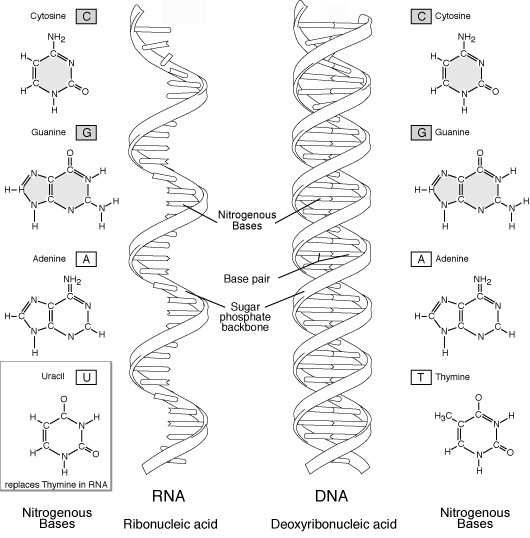
|
Main Topics > The Beginnings of Life(introduction)
What are the origins of life on Earth? How did things go from non-living to living, from something that could not reproduce to something that could? How can a collection of inanimate atoms become animate? How did organic molecules achieve a high enough level of complexity to be considered as “living”? The short answer is: we do not really know how life originated on this planet. The longer answer, however, is much more interesting. The study of the origin of life on Earth or, more specifically, how life on Earth began from inanimate matter, is technically known as abiogenesis (as opposed to biogenesis, which is the process of lifeforms producing other lifeforms, and as opposed to evolution, which is the study of how living things have changed over time since life first arose).
The modern definition of abiogenesis, however, is concerned with the formation of the simplest forms of life from primordial chemicals, rather than the old Aristotelian concept of abiogenesis, which postulated the formation of fully-formed complex organisms by spontaneous generation. It becomes, then, the search for some kind of molecule (along the lines of RNA or DNA) that is simple enough that it can be made by physical processes on the young Earth, yet complicated enough that it can take charge of making more of itself, which is probably what most people would recognize as constituting “life”. The first living things on Earth, single-celled micro-organisms or microbes lacking a cell nucleus or cell membrane known as prokaryotes, seem to have first appeared on Earth almost four billion years ago, just a few hundred million years after the formation of the Earth itself. By far the longest portion of the history of life on Earth, therefore, has involved the biochemical evolution of these single-celled micro-organisms, bacteria and archaea: we can find individual fossilized microbes in rocks 3.4 billion years old, yet we can only conclusively identify multi-celled fossils in rocks younger than 1 billion years. It is presumed that, over a few hundred million years of evolution, pre-biotic molecules evolved into self-replicating molecules by natural selection. While some aspects of the subject are well understood, others remain clouded in mystery and are the source of much contention among scientists. Although much progress has been made, there is still no single definitive theory. Life, for all its complexity, is woven out of just 30 or so different molecules, constructed from some of the most abundant elements in the universe: oxygen, hydrogen, carbon, nitrogen, sulfur and phosphorus. However, no one has yet succeeded in synthesizing a “protocell” using basic components which would have the necessary properties of life (something which has been made much of by religious creationists and anti-evolutionists), although recent work, such as that of Jack Szostak at Massachusetts General Hospital and the Howard Hughes Medical Institute, may be about to change that. The beginnings of life is, strictly speaking, a matter of biology, not physics, and essentially unrelated to most of the rest of the content of this website. I have included a brief discussion of it here, however, partly because it is another aspect of modern science which many people find confusing and puzzling, partly just because I find it really interesting (for which I made no apologies!), and partly because we are, after all, made of “stardust”.
|
Back to Top of Page
Introduction | Main Topics | Important Dates and Discoveries | Important Scientists | Cosmological Theories | The Universe By Numbers | Glossary of Terms | A few random facts | Blog | Gravitational Lensing Animation | Angular Momentum Calculator | Big Bang Timeline
NASA Apps - iOS | Android
The articles on this site are © 2009-.
If you quote this material please be courteous and provide a link.
Citations | Sources | Privacy Policy
